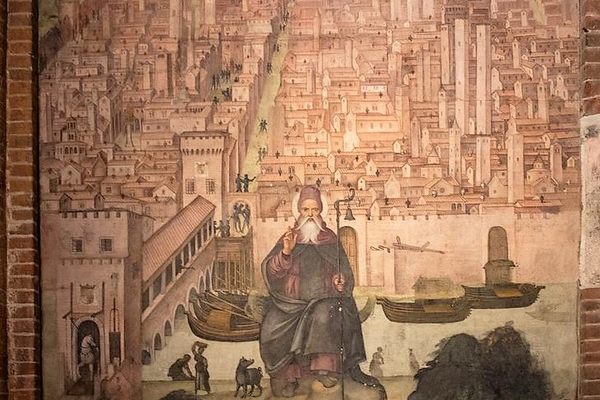About
The Basilica of Sant'Elia is adorned with some of the most beautiful frescoes in any Romanesque church in the Lazio region of Italy. It is located at the foot of the town of Castel Sant'Elia in the deep Suppentonia valley.
Tradition has it that early Christian anchorites and later Benedectine monks chose the location because of its pagan history: there was once a temple to Diana (dedicated by Nero) at this site, and before that and an Etruscan temple to Picus Martius. An early monastery was founded by Anastasius in 520, and its ownership was contested at the time of the Gothic Wars. In the early 11th century, Abbot Elias built the first basilica, which was then damaged in 1607 by collapsing rock. At the time the basilica was owned by the Farnese family, who had it reconstructed. Later, the basilica was abandoned. In the late 19th and early 20th centuries, the basilica was restored.
The structure is a classic example of a Romanesque church from the 11th century: It has a plain façade, a nave, two aisles and a raised transept, a ciborium over the altar, a beautiful Cosmatesque pavement and a crypt with the tombs of Saints Nonnoso and Anastasius. The columns and capitals were most likely repurposed from Roman buildings.
The basilica's most precious treasure is the collection of Byzantine-inspired frescoes from the early 11th century, which decorate the apse and parts of the right transept (the ones in the left transept were lost). In the center, the Redeemer is flanked by Peter, Paul and two other saints. Below them are 12 lambs (the apostles) and a procession of virgins who were most likely delivering crowns to the Virgin Mary (now lost). In the transept, one can identify scenes from the apocalypse and of the life and death of Saint Anastasius, who is buried in the crypt below.
Other pieces of Roman spolia, or repurposed building stone, are on display in the left aisle. Only the ambo (lectern) from the original schola cantorum survives to this day. In his book, Il Tempio d'Inverno (Winter's temple), the local researcher Stefano Cavalieri, describes an interesting astronomic phenomenon: on the winter solstice, the light that filters inside the church creates light effects on the basilica's columns and interiors from dawn until dusk.
Related Tags
Know Before You Go
The Basilica is open on Saturdays and Sundays (10 a.m.-12 p.m., 5-7 p.m.) and there is an entrance fee (5 euros) to visit the interior.
Flavors of Italy: Roman Carbonara, Florentine Steak & Venetian Cocktails
Savor local cuisine across Rome, Florence & Venice.
Book NowCommunity Contributors
Added By
Published
May 12, 2020









































